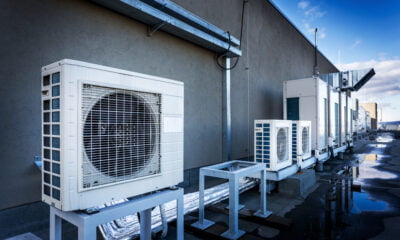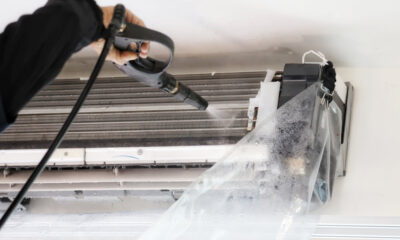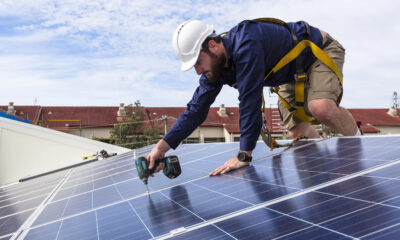Saving energy in your home is vital to both protect the environment and help your wallet. If your home isn’t energy efficient, then you will leave a larger carbon footprint. You will also pay through the nose with higher energy bills.
The good news is that there are a lot of ways that eco-conscious and frugal homeowners can help. The EPA estimates that you can cut energy costs by 15% by installing better insulation.
Most people talk about the money that insulation saves. But USIInc and GGREnergy all state that it plays an important role in helping the environment as well.
Energy Saving Tips For Your Home
You’ve probably heard it before. You live in an old home. This means that you’re overpaying on your monthly expenses, because your home is not very energy efficient.
You plan on making improvements, but then life gets in the way. There are a lot of changes you could make, like making sure that your windows are air-tight or taking a closer look at your home’s general energy efficiency.
However, there are better changes that you could make, such as making sure that your insulation is in good condition. This should be your priority before remodeling your bathroom.
These changes will save a lot of money over the years. Adding insulation to improve energy efficiency is the way to go. Whether you’re turning a garage into a room, or it’s simply been 30 years since the house was built, today should be the day that you make it a priority.
While insulating is one aspect of improving your home’s energy efficiency, it’s not the only one, and the good news is that it doesn’t require a big upfront investment to save significant amounts of money.
Besides the other initiatives used to lower your bill, retrofitting your home with insulation is a great way to make sure that you’re not simply pushing your HVAC unit and forcing it to run at maximum capacity.
Did you know that chances are that if you’re living in a home that was built before 1940, your home probably doesn’t even have insulation. At the same time, manufacturers make triple pane windows to ensure there’s as little waste as possible? Yes, the different insulating technologies have come a very long way!
Insulation won’t last forever. It deteriorates over time like anything else, so paying attention to its condition is worth considering.
There are different factors that will influence the effectiveness of the insulation, and one major thing is to actually make sure that it stays in the right spot, which you can’t simply assume. After 15-20 years, it’s not uncommon to get problems with your batt insulation falling down. Additionally, dirt and dust will also affect the R-rating, and if you’re not careful, water leaks can also cause damage to the material.
Different conditions will influence how long you can count on your construction materials to be effective for, and if it either gets punctured or affected by mold, having a contractor come by your house to evaluate the situation is also crucial.
Opening up that energy bill every so often should be enough inspiration for you to do something about it, especially if you know that your neighbors are paying substantially less than you are, and that they’re living in a house that is very similar to yours.
If you truly live in a home that doesn’t have much insulation left in it, it can even be the case that you need to do it simply to ensure comfortable indoor temperatures in the winter, at least if you live in the Northern parts of the country. And while you can of course put on a sweater to counteract it, not having to is often more tempting, because you shouldn’t have to, right?
If your home is old, and you’ve had pests and roof leaks while living there, you can probably count on having to take additional measures after 35 years of doing very little. If you haven’t yet, the first step is to actually determine how relevant the need for additional insulation is, or whether you should otherwise be focusing your efforts elsewhere, like that grout that has seen better days.
While patched holes in the wall will be an indication that blown-in insulation was added, it’s a good idea to actually have it properly checked where there are temperature variations across your home’s facade. The higher the temperature difference is between the outside temperature and the temperature of the walls, the more it calls for improvements in the insulation. Chimneys and fireplaces are often the sinners letting out all that air-conditioned air, although the first place you should be checking is what the condition is of the insulation in the attic, where heat will rise to.
Although deterioration in material is a definite possibility, another possibility is that you simply had something installed which might have been what was used for insulation at the time when it was installed, although it will be considered extremely inefficient with the development in construction materials over the last couple of decades. If your walls simply had loose-fill added to them, chances are that it has compacted over time, meaning that certain parts of the wall will have significantly denser material, while the rest of the wall may have barely any.
In the event that you’re having additional insulation installed, you should also make sure that you familiarize yourself with the different types that exist in the market. The different kinds of materials will become relevant depending on how you’re planning on addressing the project. If you’re doing a big round of home improvements you might naturally be taking down the walls, although there are times when retrofitting insulation is a better option, which means you’re therefore limited to options that won’t require the rebuilding of walls.
For those situations where you don’t mind taking down the entire wall and going from there, batt and rigid boards are the typical materials that will be installed, which can consist of a mixture of plastic foams, fiber, fiberglass, cotton or wools, whereas loose fill that is retrofitted with existing walls will usually be cellulose, glass, fibers or mineral.
Another insulating material is spray foam, which expands upon contact. The advantage to this type of material is that it can both be added to areas already finished, but you might have parts of your home that don’t fare well with the other traditional materials, because of the shape that it has. While some materials may be good, if the shape of the area that needs to be insulated doesn’t work with that type of material, it will be both hard to work with as well as only providing limited insulating capabilities when applied. That’s where the foam is convenient because it can go in all those areas not perfect for others materials, although it’s also commonly used for unfinished floors.
The first step in making sure you’re helping out the environment is to open your eyes and realize there’s a need for change and addressing those air leaks. There’s a bunch of ways you can work to make your home more eco-friendly, though.
Adding Insulation Helps The Environment And Cuts Costs
You can save the environment and cut costs by making a few changes. Adding insulation to your home is the easiest thing that you can do. Why not add new insulation today? You will save 15 cents for every dollar you spend on energy. You will also help the environment!


 Environment9 months ago
Environment9 months agoAre Polymer Banknotes: an Eco-Friendly Trend or a Groundswell?

 Environment11 months ago
Environment11 months agoEco-Friendly Home Improvements: Top 7 Upgrades for 2025

 Energy12 months ago
Energy12 months agoA Closer Look at The Rapid Growth of Solar Energy in Ireland

 Features8 months ago
Features8 months agoEco-Friendly Cryptocurrencies: Sustainable Investment Choices































